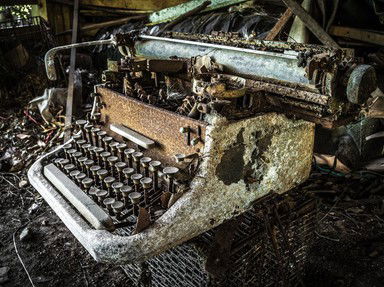Quiz Answer Key and Fun Facts
1. "Two roads diverged in a yellow wood,
And sorry I could not travel both,
Water, water, every where,
Nor any drop to drink."
Which two poets got mashed up in this poem?
2. "Shall I compare thee to a summer's day?
Thou art more lovely and more temperate.
And the silken, sad, uncertain rustling of each purple curtain
Thrilled me - filled me with fantastic terrors never felt before."
Can you determine which two poets were mixed-up from these lines?
3. "We
Lurk late. We
Strike straight. We
Tell all the truth but tell it slant."
Can you figure out which two poets have had their lines crossed here?
4. "The Owl and the Pussy-cat went to sea
In a beautiful pea-green boat,
Do not go gentle into that good night.
Rage, rage against the dying of the light."
Can you determine which two poets were mashed up into this poem?
5. "A damsel with a dulcimer
In a vision once I saw:
O Attic shape! Fair attitude! with brede
Of marble men and maidens overwrought."
Which two famous poets have had lines from their poems smashed together here?
6. "The only emperor is the emperor of ice-cream.
This is the way the world ends
Not with a bang but a whimper."
Two poets have had their poems mashed up into one here. Which poets?
7. "Where are we going, Walt Whitman? The doors close in an hour.
This flea is you and I, and this
Our marriage bed, and marriage temple is."
The poems of which two poets have been merged here?
8. "Nor the woman in the ambulance
Whose red heart blooms through her coat so astoundingly -
a red wheelbarrow
glazed with rain water."
9. "The whiskey on your breath
Could make a small boy dizzy;
Nothing beside remains. Round the decay
Of that colossal Wreck, boundless and bare
The lone and level sands stretch far away."
Which two poets have had their work incorporated into this new poem?
10. "'Forward, the Light Brigade!'
Was there a man dismayed?
When all at once I saw a crowd,
A host, of golden daffodils."
Which two poets had their poems unceremoniously put together?
Source: Author
trident
This quiz was reviewed by FunTrivia editor
looney_tunes before going online.
Any errors found in FunTrivia content are routinely corrected through our feedback system.
